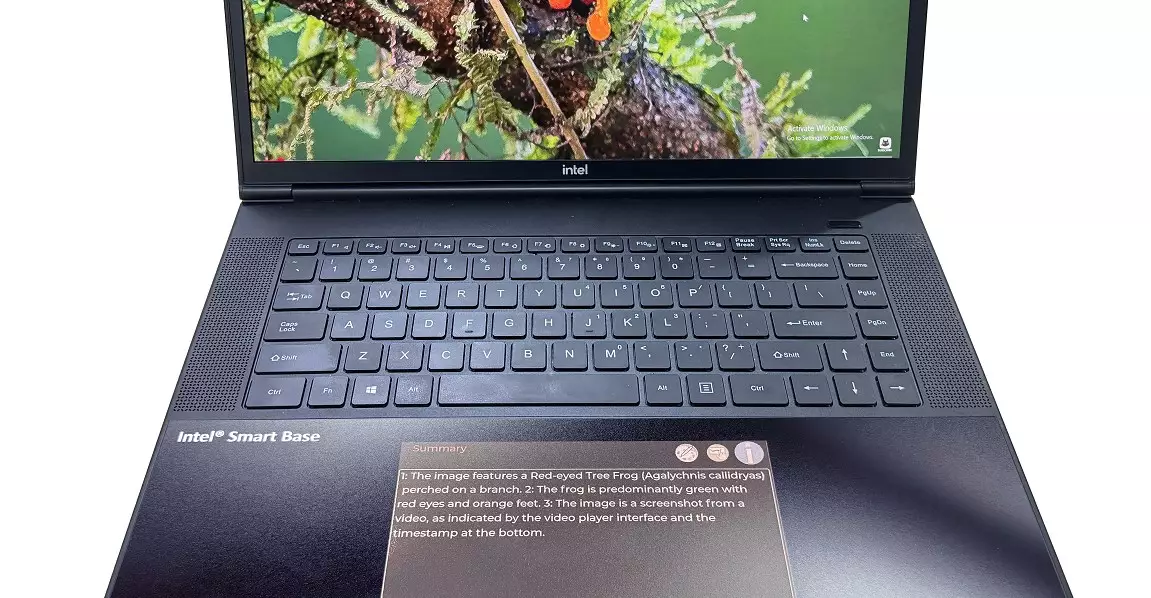In an era where productivity and efficiency are paramount, the idea of integrating innovative display technology into everyday devices is both exciting and disruptive. E Ink’s latest advancement—an electronic paper-based touchpad—is not merely a tweak to existing hardware but a visionary step toward reshaping how we interact with laptops. Unlike traditional touchpads that serve solely as input peripherals, this new technology promises to transform the touchpad into a multifunctional, always-on interface dedicated to managing AI-based tasks and enhancing user experience.
This development signifies a broader trend where device manufacturers are seeking to reduce reliance on power-intensive displays while still offering rich, dynamic content. The concept of a secondary screen embedded within the touchpad leverages E Ink’s low-power characteristics to potentially resolve longstanding issues like battery drain during intensive AI usage. Consequently, laptops could become more intelligent, intuitive, and energy-efficient, ultimately elevating user satisfaction and productivity.
Shifting the Paradigm from Secondary Screens to Dedicated AI Hubs
While the industry has experimented with secondary displays—such as ASUS’s large touchpad screens or Apple’s now-discontinued Touch Bar—these have often fallen short of expectations. Small LCD screens tend to be a compromise, sometimes too limited for effective multitasking and easily distracting. E Ink’s color e-paper offers a different approach by providing a static, glare-free, and visually gentle interface capable of displaying text and simple graphics without draining the battery.
Rather than competing with the main display for space, the E Ink touchpad aims to carve out its own domain as a hub for AI interactions, notifications, and quick-access controls. Imagine a laptop where your AI assistant can seamlessly provide contextual summaries, reminders, or even manage your calendar, all displayed under your fingertips. Instead of cluttering your workspace with multiple windows, this dedicated space allows for smoother, less distracting multitasking — a vital feature as AI-powered tools become more integrated into daily workflows.
This concept could mark a significant shift in user interface design, where the touchpad evolves into a contextual workspace rather than merely an input device. It echoes a future where hardware and software intertwine more organically, offering users streamlined access to information, notifications, and commands.
Technical Considerations and Challenges Ahead
Despite the promising vision, several technical and practical questions remain unanswered. The lack of detailed specifications on the display resolution, refresh rates, and the integration with laptop internals leaves some uncertainty about how well the technology will perform in real-world scenarios. For instance, the color capabilities of the E Ink screen and its responsiveness are crucial factors that will determine its usability for dynamic content.
Power consumption remains a core advantage of E Ink, as it only consumes energy when updating the display. This characteristic could allow laptops to handle AI applications that are currently constrained by battery constraints, heralding a new class of low-power, always-on assistants. However, compatibility issues may arise depending on whether the new touchpad will operate independently or rely on the laptop’s main OS.
Furthermore, questions of hardware integration and manufacturability loom large. Will laptop makers embrace this tech? Will the increased production costs be justified by the user benefits? The absence of a clear timeline for market adoption suggests that this innovation is still in its nascent stages, but its conceptual appeal is undeniable.
Rethinking Focus: The Future of User-Centric Laptop Design
As the boundaries between hardware capabilities and software needs continue to blur, the industry must rethink what makes a device truly user-centric. E Ink’s low-power touchpad exemplifies a shift toward more sustainable, context-aware devices. It encourages us to question longstanding assumptions—do we need brighter, higher-resolution screens everywhere, or can we strategically deploy more efficient displays in specific roles?
By embedding dedicated AI interfaces into the hardware itself, laptops could become more personalized and less cluttered. This approach not only conserves battery life but also aligns with a future where AI seamlessly complements human tasks without overwhelming them with extraneous information. The potential for such technology to redefine interaction paradigms is immense, providing a winning combination of energy efficiency, usability, and innovative form factors.
While many details remain to be ironed out, E Ink’s venture into low-power, AI-centric touchpads signals a bold step toward smarter, more sustainable laptops. By challenging conventional assumptions about display technology and user interfaces, this innovation might just herald a new era of efficient, intelligent portable computing—one that combines minimalism with maximum functionality.

